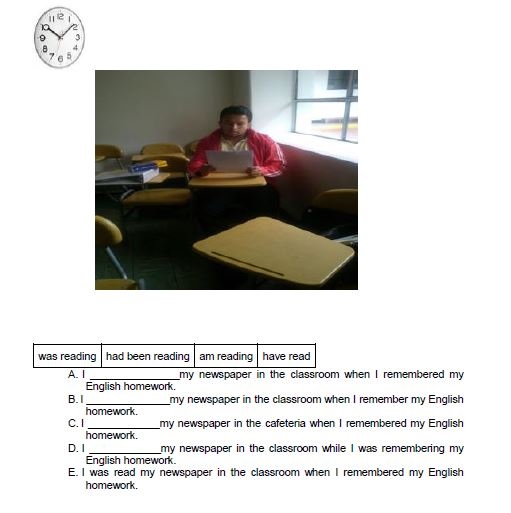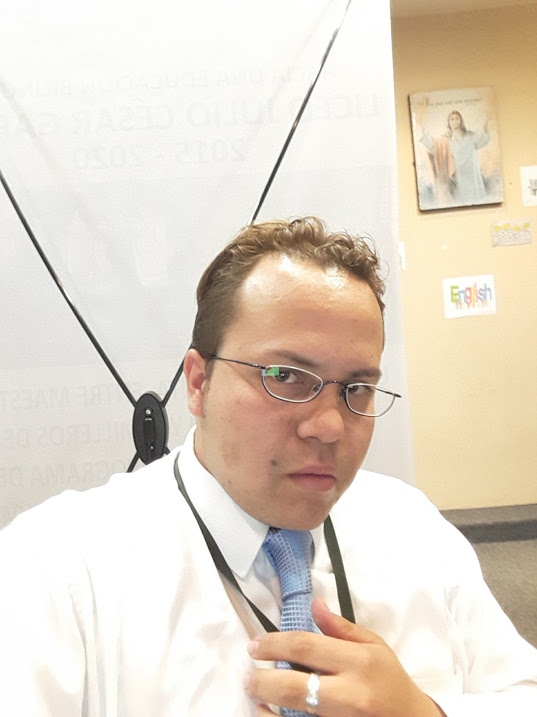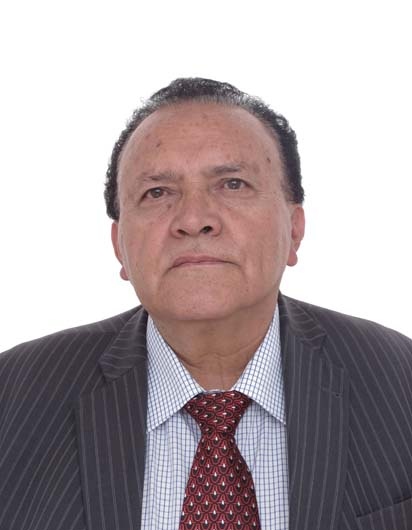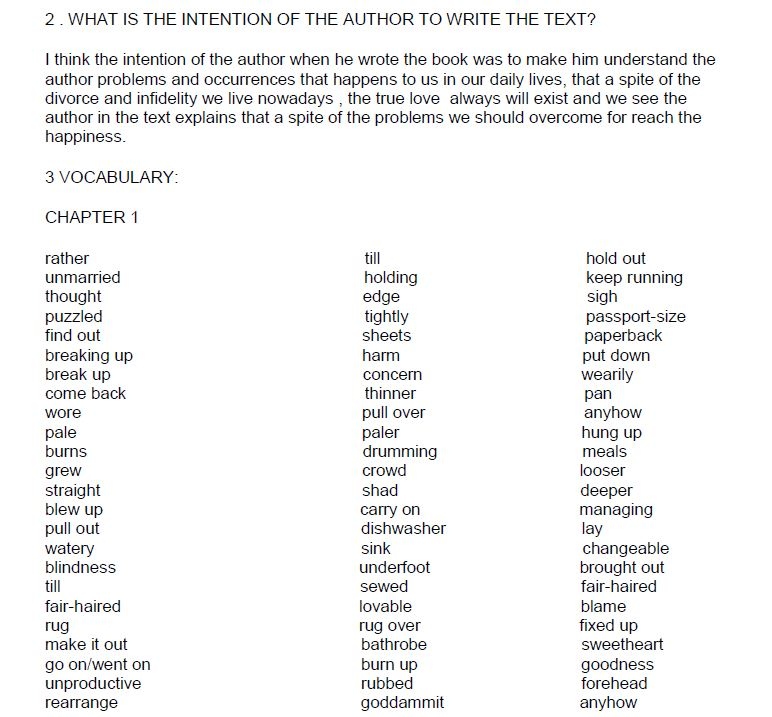|
| |||||
Curricular adjustment strategies for EFL students with Mild Intellectual DisabilityCarlos Carrillo & José Guillermo Rodríguez SeguraAbstract In this study, a methodological strategy is explored, in order to determine how to strengthen the EFL learning process of a student with intellectual disability enrolled at Universidad La Gran Colombia (UGC). Key words: Curriculum restructuring, EFL, Inclusion, Methodological strategies. Introduction This investigation intends to analyze the impact of curriculum restructuring within the language development of a student with intellectual disabilities, who is pursuing a B.A in English. Hence, inclusive education considerations were essential to promote the culture of academic environments in which fairness embraces teaching (Álvarez & López, 2015). Nowadays, education policies are inclined to foster schools as the place where people have the right to develop their personalities as well as pursue their academic interests without suffering discrimination. In this context, EFL teachers in Colombia must be aware of the “Integration Policy” Decree 2082, enacted on November 18, 1996, and its future amendments, which state that education must be offered without any physical or cognitive restriction, as well as the inclusive policies adapted since the international recognition of diversity and special needs within mainstream classrooms. Furthermore, it is possible to classify disabilities into three main categories (Battaglia & Carey, 2003).
Special education narrows pedagogical interventions within the school to facilitate an appropriate form of education for those students who cannot, or for whom it is not likely to, achieve the basic standards of school, in order to preserve their academic success through school content assimilation (UNESCO, 1977). Population Two students in the B.A in English Program, at UGC, are currently working with two full time professors and researchers who seek to enhance inclusive environments for bilingual education within EFL mainstream classrooms. The main interest of the researchers is to help the group of ten participants with disabilities to pursue their studies and to develop the competencies a class requires. In this article, we highlight the findings of the research, which is being carried out with one participant with intellectual disability. In this research study, a student in his sixth semester, with an IQ of 55, was diagnosed with a low cognitive deficit, also recognized as Intellectual Disability. As a result, his EFL learning process has been affected. Therefore, the main purpose of this case study is to look for ways to strengthen his communicative skills in the target language, in order to accomplish the objectives of the English course. This participant has studied at UGC for 3 years, but he has not been able to accomplish the requirements of the English courses, in part, because, when expressing his ideas, he makes prolonged pauses that hinder the message he’s trying to convey.. In addition, there is not enough coherence when expressing his ideas in relevance and manner (Grice, 1975). Also, his body language is simple and plain, and, in terms of eye contact, he is always shy and looking away, thereby creating an interaction barrier between himself and others (Rodriguez, 2010). Methodology On one hand, the systematic observation and analysis of the inclusion phenomenon is evident in the development of this project, as a case study (Wallace, 1998). On the other hand, the deep analysis of the EFL learning process of the participant allows the researcher to identify the effect of modifying the micro-curriculum for inclusive education. From his writing compositions, as well as his interaction with others, we could detect the following issues:
Mediation This mediation was divided into cycles in which this student had to attend psychological evaluations and 32 tutoring sessions with academic researchers for one year. From the Department of Psychology, some recommendations were made about how to best meet the needs of this student. Based on these recommendations, his socio-affectionate mood was used as a starting point to determine if he (as learner) was ready or not ready to perform any activity assigned in class. Thus, many supporting therapeutic activities were made in order to determine his emotions/feelings level, through which he showed commitment and attentiveness. Some of them were:
Likewise, based on the comments of the psychologist and the suggested emphasis on the crystallized intelligence, the junior researcher had several meetings with the participant in order to design supporting material for him, making use of the student’s textbook and image. Therefore, under personalized sessions, his time was divided into three sections, (task preparation, task presentation and task reflection), allowing him plenty of time to complete his work. The activity given below is a sample aimed to address language challenges that the student faced when taking the university’s entry test.  Image 1. Sample of an activity Additionally, during this research process, two open-question interviews were carried out with the Intermediate English course professor, to assess the student’s learning development. Besides that, some narrations made by the learner concerning his role and performance in his English classes, were analyzed. Results and Conclusions The results obtained from this research demonstrated that the educator should develop an action plan and deepen his knowledge concerning students’ learning difficulties. Therefore, it is necessary that Institutions of Higher Learning (Higher Education) implement, within their Inclusion Policies, the tools, time, and required personnel to further explore these issues. Universities should support students who need additional time (De La Cruz, C, 2006). During this case study, it was evident that the student, being highly motivated by the psychologists, researchers, and his junior research partner, felt that he was being trained to be part of this process and share his concerns, anxieties, and goals; it was also evident that his knowledge and use of English as a foreign language were improving as well. At the end of this course, the student wrote texts with better cohesion and coherence. Even though he needs a stronger proficiency level in the use of some grammatical structures, his oral production became clearer and more coherent.
Based on the findings, it is important to emphasize that this micro-curriculum adjustment does not pretend to create an environment of exclusion or segregation; on the contrary, it aims to provide the Higher Education community with an understanding of “Inclusion as the first step towards integration, in which there should be the possibility of having an educational system capable of appropriating diversity and not simply tolerating it“ (Stainback, S.; Stainback W, 1999). This type of intervention would enrich foreign language academic courses, making use of specific methodological processes that would benefit and ameliorate linguistic productions from learners, as well as strengthen interpersonal relationships through self-confidence-building activities and personal commitment. This model of inclusion keeps in mind two important elements proposed by Dr. Kliewer, cited by Berg, (2004), in which there should be a curriculum that focuses on humankind as something worthy, where students have the opportunity to express what is meaningful for their lives, and also stresses the importance of generating a curriculum where the learner is also involved. Finally, in this study phase, the learning progress of this student was evident, due to the meaningful curriculum modifications and the results he received in his assignments. References Biehler and Snowman (1997), Psychology applied to teaching. 8/e, 1997, Hougton Mifflin Co. (Chapters 4 & 11). 8/e, Houghton Mifflin Co. Ellis,R (2003). Task based Language Learning and Teaching. (1sd, vol1).New York: Oxford University press. Revista Internacional Magisterio N 56 Tema: Educación e inclusión Invitado: María Alicia Castillo (Colombia) González Sepúlveda, R. (2016). Motivación para la “inclusión”, características y necesidades de los estudiantes y docentes en la universidad. (Aplicativo con análisis) Recibido:Abril 02 de 2015 http://revistas.ufps.edu.co/ojs/index.php/ecomatematico/article/view/464/481 Grice, P (1975) Logic and conversation. In Cole, P., and J.L. Morgan, eds. Speech Acts. New York: Academic Press. Lewin, K.M. and Stuart, J.S. (2003) Researching teacher education: new perspectives on practice, performance and policy. Multi-Site Teacher Martin-Caro, L (2001) Sistemas de comunicación y parálisis cerebral.Madrid.I.C.C.E. Montero, C (2017) Inclusive Pedagogy. Fostering Inclusive Education Program at Colegio Hermanos Beltran through Topic Based Unit Approach.(trabajo de grado) Universidad Libre, Bogotá, Colombia. Rodríguez,J (2010) Communicating Effectively for Teaching Effectively. Universidad La Gran Colombia, Bogotá.Colombia. ________________
 Carlos Carrillo is a Lecturer & Researcher at Universidad La Gran Colombia in Bogotá, Colombia, where he teaches pragmatics.  José Guillermo Rodríguez Segura, is the Director of the Bilingual Education Project at Universidad La Gran Colombia in Bogota, Colombia. | |||||
| ITBE Link - Spring 2017 - Volume 45 Number 1 | |||||

